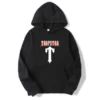In recent years, the demand for healthy snacks has surged, reflecting a broader trend toward health and wellness in consumer behavior. One standout product in this category is energy balls—nutrient-packed bites that are both convenient and nutritious. The global energy balls market size reached approximately USD 369.29 million in 2023. The market is estimated to grow at a CAGR of 6.5% in the forecast period of 2024-2032, reaching a value of around USD 648.75 million by 2032. This blog post will delve into the factors driving this growth, the market dynamics, segmentation, and regional analysis, providing a comprehensive overview of what the future holds for energy balls.
Market Overview
Energy balls are compact snacks typically made from a blend of nuts, seeds, fruits, and other wholesome ingredients. They offer a quick source of energy and are often marketed as healthy alternatives to traditional snacks. The growing awareness about nutrition, fitness, and overall well-being has positioned energy balls as a favored choice among health-conscious consumers. With the rise of busy lifestyles, these portable snacks have become a staple for many, leading to their burgeoning popularity.
Market Size and Share
The energy balls market is not just a passing trend; it represents a significant segment of the health foods industry. In 2023, the market size was estimated at around USD 369.29 million, reflecting an increasing consumer inclination toward healthier snack options. With a projected compound annual growth rate (CAGR) of 6.5% from 2024 to 2032, the market is poised to reach an impressive USD 648.75 million by the end of the forecast period. This growth can be attributed to various factors, including the rise in fitness activities, greater focus on health and nutrition, and the convenience of on-the-go snacking.
Market Trends
Several key trends are shaping the energy balls market. One of the most prominent is the increasing preference for health-centric snacks. Consumers are becoming more aware of the ingredients in their food, leading to a demand for transparency and quality. This trend is closely tied to the growing popularity of plant-based diets, with more consumers seeking options that align with their values around health, sustainability, and ethical eating.
Innovations in flavors and ingredients are also driving market growth. Brands are experimenting with exotic ingredients, superfoods, and unique flavor combinations to attract consumers. Additionally, the incorporation of functional ingredients—such as protein powders, adaptogens, and probiotics—appeals to those looking for specific health benefits.
Market Segmentation
By Ingredient
The energy balls market can be segmented based on ingredients into several categories:
- Nut-based Energy Balls: These are rich in healthy fats, protein, and fiber. Common nuts include almonds, cashews, and walnuts, which not only add flavor but also provide essential nutrients.
- Fruit-based Energy Balls: Typically made from dried fruits such as dates, apricots, and figs, these options are popular for their natural sweetness and vitamin content.
- Chocolate-based Energy Balls: Combining indulgence with nutrition, chocolate-based options often incorporate cacao or dark chocolate, appealing to consumers’ desire for a treat without the guilt.
- Others: This category includes energy balls made from seeds (like chia or hemp), grains (like oats), and other alternative ingredients, catering to diverse dietary needs.
By Nature
Energy balls can also be classified by their nature:
- Organic: As consumers lean towards clean eating, organic energy balls are becoming increasingly popular. They are perceived as healthier, free from pesticides and synthetic additives.
- Conventional: Conventional energy balls still hold a significant market share, appealing to consumers looking for convenience and affordability.
By Distribution Channel
The distribution channels for energy balls include:
- Hypermarket/Supermarket: These venues dominate the market, providing a wide selection of products and brands, making them a go-to for many shoppers.
- Convenience Stores: With their focus on quick purchases, convenience stores play a crucial role in reaching on-the-go consumers.
- Specialty Stores: Health food stores and specialty shops cater specifically to health-conscious consumers, offering a curated selection of premium products.
- Online: The rise of e-commerce has transformed how consumers purchase energy balls. The convenience of online shopping and access to a broader range of products has driven significant growth in this channel.
- Others: This includes niche markets like gyms, fitness studios, and cafes that offer energy balls as part of their menu.
Regional Analysis
The energy balls market is experiencing diverse growth across various regions.
- North America: This region is a significant market, driven by a high level of health consciousness and the presence of several key brands. The demand for plant-based snacks continues to rise.
- Europe: Similar to North America, Europe showcases a growing trend toward organic and healthy snacking options. The market is characterized by innovative flavors and high-quality ingredients.
- Asia-Pacific: The energy balls market in this region is on the rise, fueled by a growing middle class and increasing health awareness. However, cultural preferences for traditional snacks may pose challenges.
- Latin America and the Middle East: These regions are emerging markets with significant growth potential, as consumers become more aware of the benefits of health-oriented snacks.
Market Dynamics
Drivers
The primary drivers of the energy balls market include the increasing awareness of health and wellness, the demand for convenient snack options, and the growing popularity of fitness activities. As more people prioritize their health, the shift from unhealthy snacks to nutritious alternatives is undeniable.
Challenges
Despite its growth, the market faces challenges such as competition from other snack categories, which can divert consumer attention. Additionally, supply chain issues, particularly regarding ingredient sourcing, can impact product availability and pricing.
Opportunities
Innovative product development offers a significant opportunity for brands to differentiate themselves. Expanding into untapped markets, particularly in Asia and Latin America, presents another avenue for growth.
Competitive Landscape
The competitive landscape of the energy balls market is dynamic, with several key players making strides in product innovation and marketing. Brands are increasingly focusing on building a strong online presence and utilizing social media to engage with health-conscious consumers. Recent mergers and acquisitions have also reshaped the market, allowing companies to expand their reach and enhance their product offerings.
Future Outlook and Forecast
The energy balls market is set for impressive growth in the coming years. With a projected CAGR of 6.5% from 2024 to 2032, industry experts anticipate that consumer demand for healthy and convenient snacks will continue to rise. As brands adapt to changing consumer preferences and invest in innovative products, the energy balls market will likely flourish.









